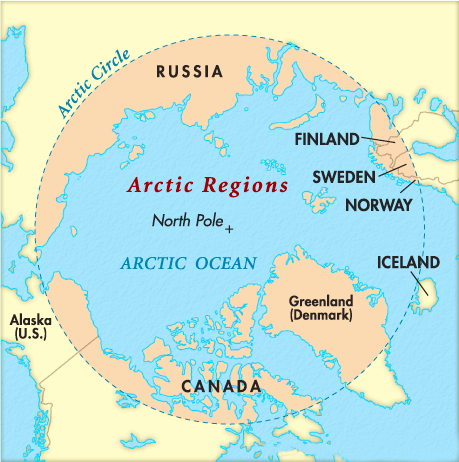Arctic Sea Ice Impacts India’s Erratic Monsoon
Why in the news?
New research shows declining Arctic sea ice influences Indian monsoon patterns, causing reduced rainfall in some areas and increased rainfall in others, complicating weather predictions and worsening climate impacts.
About the Impact of Arctic Sea Ice on Indian Monsoon:
- Research Findings: Recent studies reveal that diminishing Arctic sea ice affects Indian monsoon patterns.
- Less ice in the central Arctic results in reduced rainfall in western and peninsular India but increased rain in central and northern regions. Conversely, decreased sea ice in the Barents-Kara Sea delays the monsoon onset and increases unpredictability.
- Monsoon Dynamics: The Indian summer monsoon is influenced by various factors, including sea surface temperatures and atmospheric conditions.
- Lower sea ice levels alter atmospheric circulation, impacting weather patterns and leading to erratic rainfall. Increased sea ice can enhance Rossby waves, affecting pressure systems and altering rainfall distribution.
Recent Floods and Warnings:
- Severe Impact: Unpredictable rainfall has caused significant damage in India, with at least 17 deaths and widespread flooding in Andhra Pradesh and Telangana.
- The Indian Meteorological Department has issued warnings for heavy rains in Gujarat, Himachal Pradesh, and Delhi.
Role of Climate Change:
- Exacerbating Factors: Climate change accelerates Arctic sea ice loss, contributing to the variability and unpredictability of the Indian monsoon.
- This results in increased droughts in some areas and excessive rainfall in others, highlighting the need for improved climate research and forecasting.
About Arctic Amplification:
About: Arctic amplification is the increased warming in the Arctic region due to changes in surface air temperature and net radiation balance.
Causes:
- Ice-albedo feedback: Less ice means more heat absorption.
- Lapse rate feedback: Reduced temperature decrease with elevation.
- Water vapour feedback and ocean heat transport.
- Human-induced global warming has increased Earth’s average temperature by 1.1°C.
Consequences:
- Weakening Jet Streams: Affects temperatures in Europe and northwest India.
- Ice Melt: Contributes to rising sea levels and potential complete melt of the Greenland ice sheet.
- Sea Water Changes: Affects marine biodiversity and salinity.
- Fauna Impact: Increased rainfall disrupts food sources for Arctic species.
- Gaseous Emissions: Thawing permafrost releases greenhouse gases and potential pathogens.
What is the National Centre for Polar and Ocean Research?
- Established: 1998, formerly National Center for Antarctic and Ocean Research (NCAOR).
- Role: India’s premier R&D institution for polar and southern ocean research.
- Tasks: Plans and executes polar expeditions, research in Antarctica, Arctic, Himalayas, Southern Ocean, and strategic projects like EEZ mapping.
- Location: Vasco da Gama, Goa.
- Nodal Ministry: Ministry of Earth Sciences (MoES), Government of India.
Associated Article:
https://universalinstitutions.com/climate-change-and-indian-monsoon/




